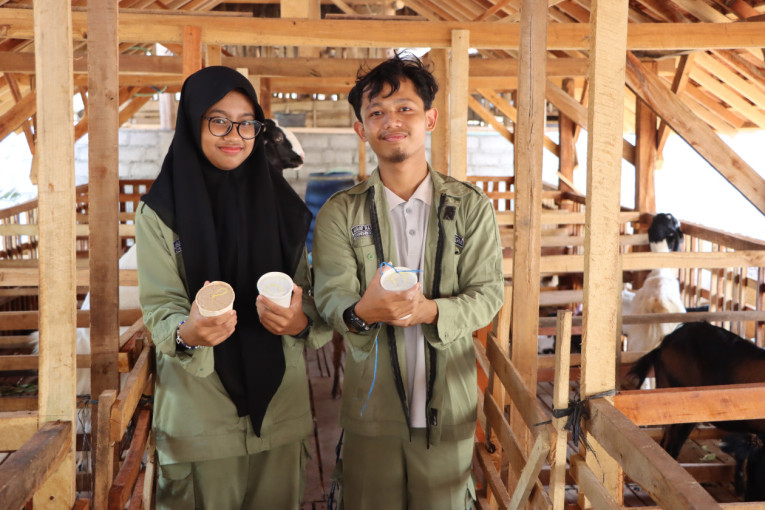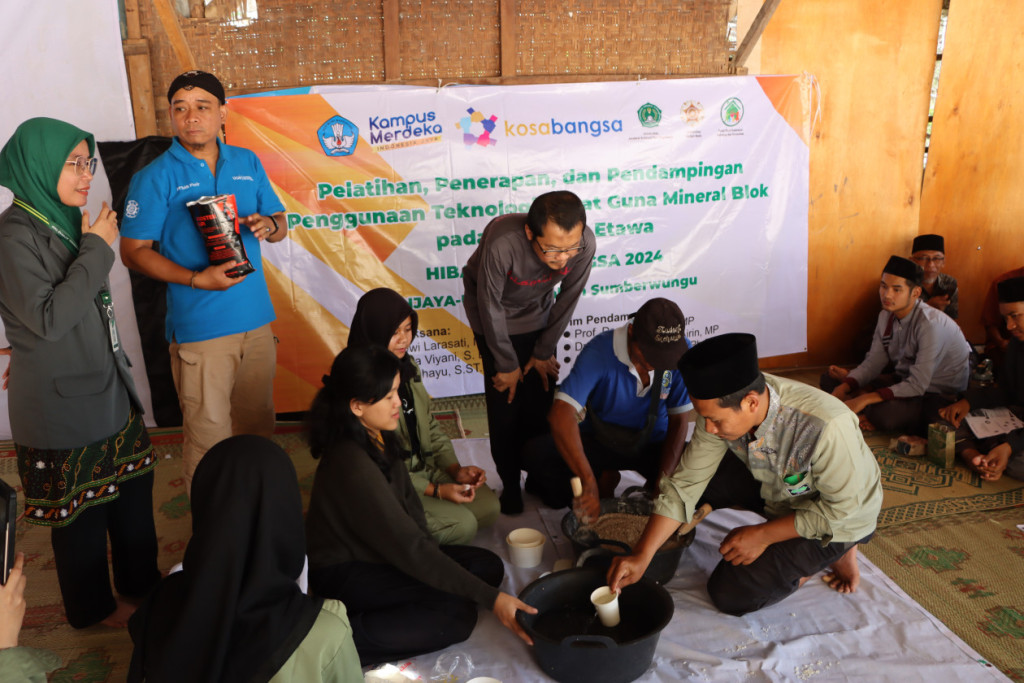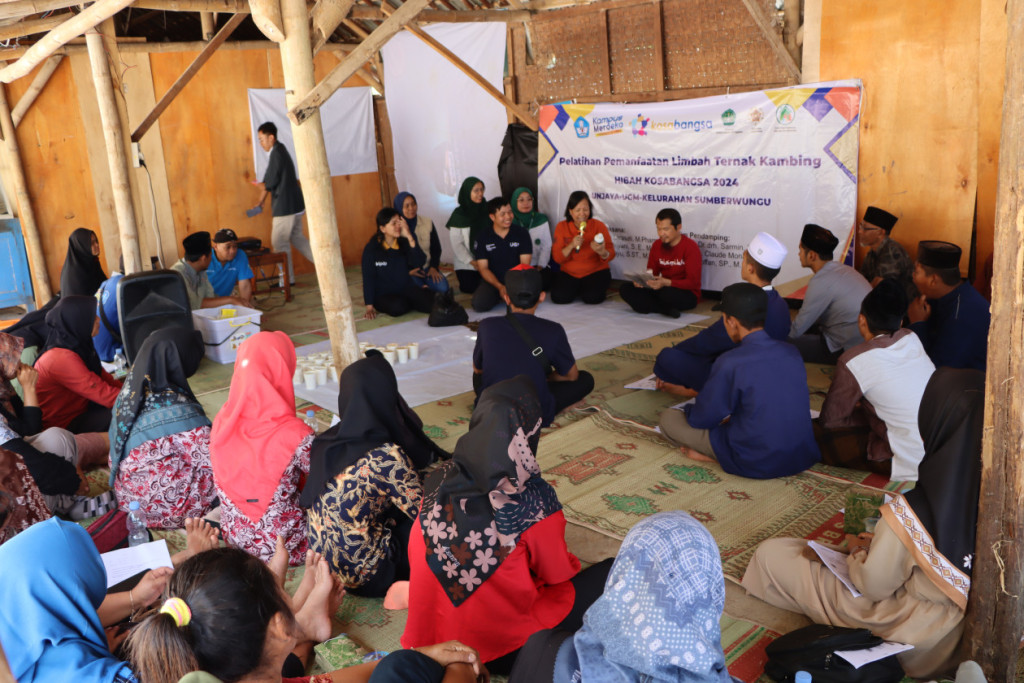
Have you ever noticed goats or sheep eating soil or licking walls, wooden barn structures, or tree bark? These behaviors indicate that the livestock may suffer from a mineral deficiency.
According to Dr. Cuk Tri Noviandi, a UGM Faculty of Animal Science lecturer, minerals are essential for livestock such as goats, cattle, and sheep. Mineral intake is critical for supporting the growth and physiological processes of animals.
“Even though livestock require minerals in small amounts, they play a crucial role in reproduction and development,” Dr. Noviandi explained during a training session with dozens of members from the Women’s Farming Group (in Sumberwungu Village, Gunungkidul Regency, Yogyakarta Province, on Saturday, Oct. 5.
Dr. Noviandi identified several mineral deficiency symptoms in livestock, including feeding disorders where animals eat soil, concrete walls, wood, cloth, or trash.
Physical symptoms such as hair loss, rough coats, weight loss, weakness, miscarriages, reproductive difficulties, and hypocalcemia (marked by cows collapsing) are also common.

He emphasized that livestock such as goats and cattle cannot rely solely on forage or concentrated feed. They require a combination of both, along with added minerals.
“If they only eat grass, they may get thinner but won’t die. However, if they only receive concentrate, they could die within two months,” Dr. Noviandi said.
Farmers can face high market costs for mineral supplements. He provided a simple recipe for creating mineral blocks that can be placed in the barn. The mixture consists of 4 kg of salt, 1 kg of white cement, and 1 kg of mineral premix.
“Mix everything evenly, let it dry, shape the mixture, add water, and let it dry for 1-2 days,” he instructed.
The shaped blocks can be placed in plastic containers in the barn for the livestock to consume. These mineral blocks are expected to improve feed efficiency, increase feed consumption by 25-30%, boost livestock growth, enhance meat and milk production, improve reproduction, and strengthen livestock immunity.

UGM’s Professor of Veterinary Medicine, Professor Sarmin, explained that introducing the method of making mineral blocks to the women’s farming group is part of developing an integrated and sustainable farming system.
“We are encouraging residents to raise goats, fish, and ducks, where goat manure will be used for biogas production, and forage will be planted to increase feed and income,” said Professor Sarmin.
The professor also introduced several goat breeds for breeding, such as Saanen, Kacang, Etawa, Boer, and Nubian goats.
To support feed availability, farmers were encouraged to plant various types of grasses, such as elephant grass, king grass, natural grass, and Benggala grass.
Ingredients such as bran, dried corn, fishmeal, and tofu residue were suggested for making concentrate feed.
The UGM team recommended a raised platform model for barn construction, which would make it easier to clean and collect manure for processing into organic fertilizer.
“We hope this goat farming initiative can also lead to by-products such as goat milk dodol, compost, and pasteurized goat milk,” Professor Sarmin added.
A representative from the Sumberwungu Village government expressed gratitude for the training and support provided to the women’s farming group.
“This training was evident and beneficial, especially regarding livestock farming. The women in Sumberwungu Village have learned new techniques for better animal husbandry. We thank UGM and the Ainul Yaqin Islamic boarding school for facilitating this,” the representative said.
Author: Gusti Grehenson

